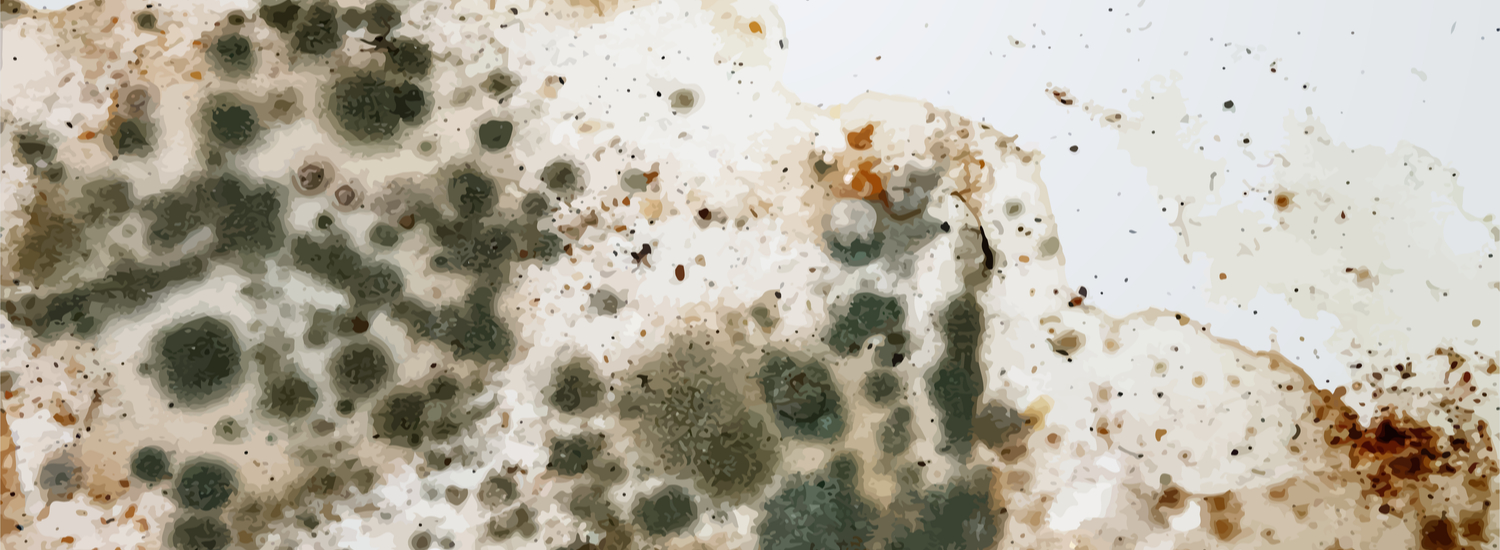Mold Humidity Bloom is the somewhat unofficial name that has been given to an event in which a building’s indoor relative humidity rises above 60% for several days, usually at least 72 hours, allowing any mold present to germinate and grow. Since this phenomenon is common in Florida, it is also referred to as Florida Mold Humidity Bloom.
Why Does Mold Humidity Bloom Occur?
There are basically four requirements needed for mold growth; the presence of mold spores, organic material to act as a food source for the mold, appropriate temperatures, and moisture/excess humidity. Take away any one of these four requirements and mold will not grow.
The presence of mold spores is virtually impossible to eliminate. Mold is found everywhere in nature. It enters our homes on air currents, on our clothing, on fresh foods, it even comes in on our pets. So clean all you want, there is always going to be some mold spores inside our homes.
Molds thrive in the same temperature ranges that we humans do. We don’t want to live inside a freezer, so there is really not much we can do to eliminate temperature from the mold equation. The same thing goes with organic food sources. Our homes are built of wood and drywall. Both are acceptable food sources for mold to feed on. There are many other materials inside our homes that are organic, but you get the picture. The sources of food are there. That leaves moisture and moisture in the form of humidity
Moisture, Relative Humidity, and Mold Bloom
Humidity is simply vaporized water in the air. Think about when you exhale. Your breath contains hundreds of droplets of invisible water vapor. If you were to exhale on the bathroom mirror you would see these droplets condense on the mirror’s surface.
We humans are comfortable when the relative humidity is in the range of 20%-60%. Below that level static electricity can surprise us if we touch metal objects. At anything above 60%, we begin to get a little uncomfortable. When it comes to avoiding mold growth, we need to maintain our home’s relative humidity level below 50%.
When moisture is present, as uncontained water or high relative humidity, mold spores will germinate. In early stages of mold bloom, the mold can appear to be soft and fuzzy, be hair-like, forming delicate strands, or be a slimy and damp looking spot, on a wall or on or near a ceiling. To prevent mold bloom, humidity levels must not be allowed to reach the 60% level for more that 72 hours.
How to Remove Mold Humidity Bloom
The first thing you need to understand about removing mold from your home is that mold should NOT be killed, it needs to be removed. The presence of dead mold spores can still cause illness and allergic reactions to mold-sensitive individuals.
At Water Mold Fire Restoration, our certified mold removal experts have the knowledge, experience, and equipment necessary to remove mold safely, efficiently, and completely. Mold remediation in any form involves eliminating the mold’s water source, establishing containment of the area where the mold is located, removing the mold and any mold-contaminated materials, and then performing a series of cleanings to completely eliminate the possibility of that mold redeveloping.
If you know, or suspect, that there is a mold humidity bloom problem in your home, call Water Mold Fire Restoration at 800-905-0277. One of our certified mold experts will come to your home, inspect for the mold, and design a safe plan for the mold’s removal. Our initial inspection and estimate are free of charge with no obligation. If you would rather contact us by email, you can do so at help@watermoldfire.net.








